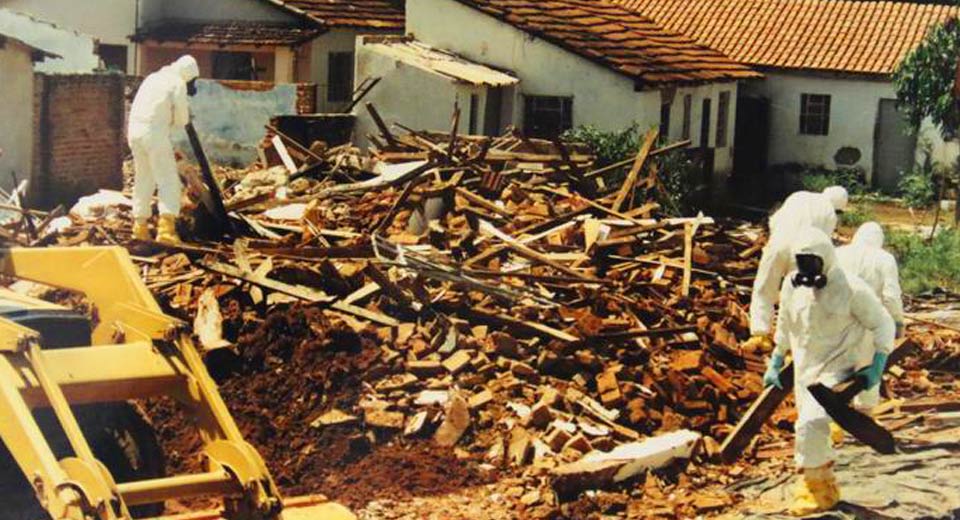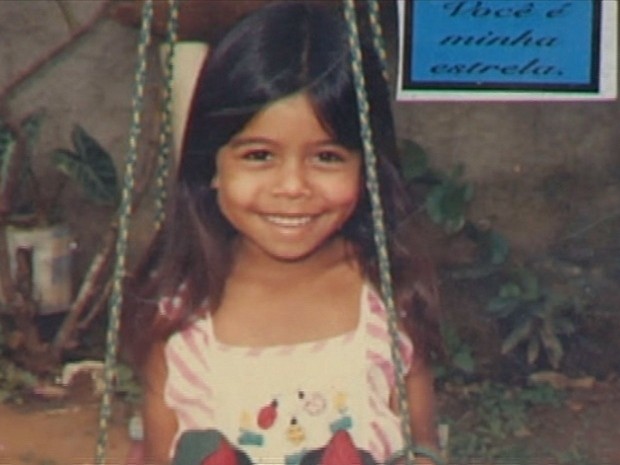RIO DE JANEIRO, BRAZIL – With the world still reeling from the Chernobyl disaster a year before, on Sept. 13, 1987, in Goiânia, Brazil, two thieves broke into an abandoned hospital and stole a dangerously radioactive piece of equipment that would subsequently kill four people and contaminate 249 others.

In a backroom of the abandoned Instituto Goiano de Radioterapia, local men Roberto dos Santos Alves and Wagner Mota Pereira found a machine used to bombard cancers with radiation to poison the disease into remission.
Goiânia’s government was fully aware of the device and its radioactive cesium 137 core, but had refused to allow the owners to remove it from the site due to a legal dispute with the building’s insurers. Alves and Pereira, looking for scrap metal to sell, seized the opportunity and took the radioactive device without knowing its purpose or the danger it represented.
Taking the device to Alves’ home in a wheelbarrow, they started to disassemble it, and both men quickly began to vomit violently.
Pereira would visit a clinic two days later, where doctors misdiagnosed his symptoms as being caused by something he had eaten. The radiation burns on his hands would eventually lead to the amputation of several fingers.
Alves continued to try to open the device, eventually piercing the cesium capsule’s window revealing a blue light – caused by the ionization of the air itself by the radiation – glowing from within the device. Alves would eventually scoop out some of the cesium thinking it was gunpowder. Later his entire forearm would be amputated.
Alves sold the device to Devair Alves Ferreira, the owner of a nearby scrapyard. Seeing the blue light inside and thinking it may be worth something or may even be supernatural, Ferreira invited several friends and family members to visit over the next three days to see the object.
Ferreira gave them several grains of cesium that he extracted from the device. His brother took some home showing it to his daughter, Leide das Neves Ferreira. The six-year-old was fascinated by the blue glow of the cesium and applied it to her body as makeup. Dust from the cesium fell into a sandwich she was eating.
The material inside of the medical device was so radioactive that spending just one hour in its presence would shatter the DNA of an individual, leading to a painful death.
Devair’s wife, Gabriela, started to notice that anyone that came into contact with the material would get sick and she reclaimed the remainder of the material from a second junkyard to which her husband had sold it.
Fifteen days after the cesium was stolen, she traveled by bus to a local hospital with the remainder of the material where the radioactivity was finally detected. Gabriela died two weeks later from radiation poisoning after receiving nearly 570 rem of radiation – 500 being a lethal dose even with treatment.
Six-year-old Leide was exposed to 600 rem of radiation. When an international team arrived to treat her, they found that she had been isolated and left alone in a room with medical staff afraid to approach her out of fear of being contaminated.

She would eventually experience hair loss, kidney and lung damage as well as internal bleeding. Leide died on Oct. 23, 1987. Her funeral caused a riot with locals worried that her irradiated body would poison the area surrounding it. With the help of the police, she was buried in a specially designed fiberglass coffin lined with lead to prevent the spread of radiation.
Two employees of Devair Ferreira, aged 22 and 19, died within a month of being exposed to 450 and 530 rem of radiation. They had worked on the device to try and extract the materials inside.
Devair Ferreira survived despite being exposed to 700 rem of radiation but would subsequently drink himself to death in 1994 following years of depression.
The government would eventually examine 112,000 people for signs of radiation poisoning with 249 found to have significant levels of radioactivity. They still receive victims compensation after being plagued with continuing radiation-related problems.
The Goiânia disaster remains, till today, Brazil’s most significant and deadly nuclear accident.

